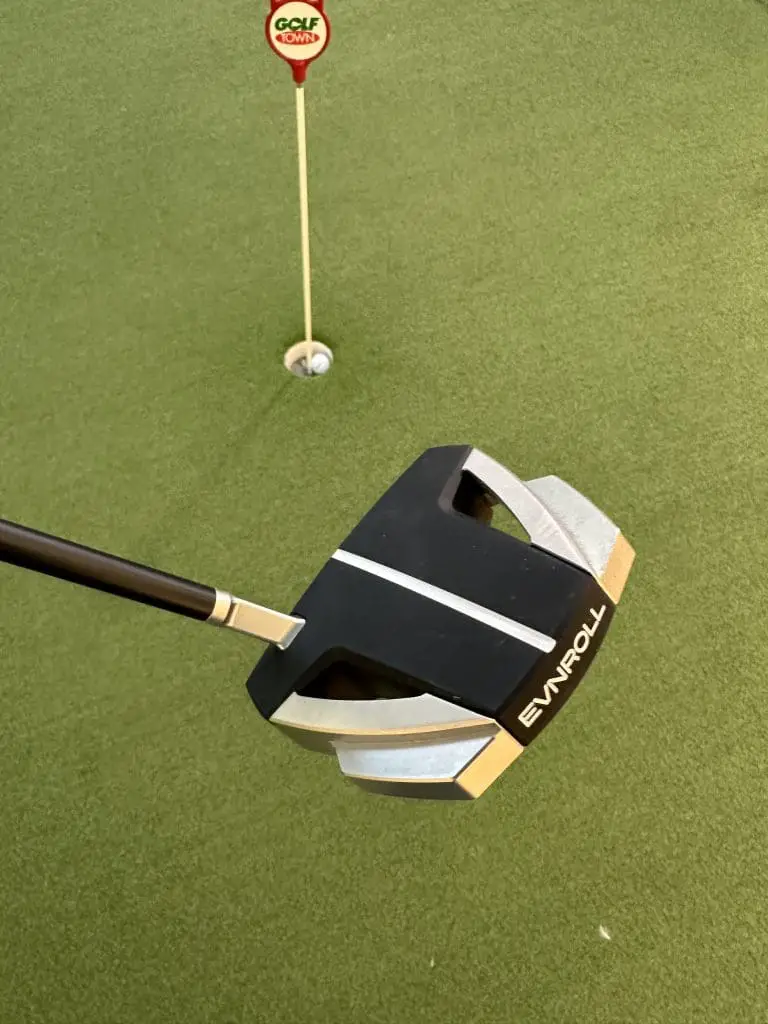What Putter is Right for a Beginner?
Embarking on your journey into the world of golf is an exciting venture, and one key aspect that often gets overlooked is choosing the right putter. For beginning golfers, the vast array of putters available in the market can be overwhelming. Do not worry, in this comprehensive guide, we will break down the essential factors to consider when selecting a putter to enhance your putting game. Let’s dive in and find the perfect putter that suits your style and helps you sink those crucial putts.
Putter Grip and Length
Start your putter selection by considering the grip and length. The grip is your connection to the putter, and it comes in quite a few different shapes and sizes. Beginners often find a thicker grip more comfortable, as it minimizes wrist movement, promoting a smoother stroke.
Experiment with different grip sizes to find what feels right for you. The three main grip sizes are Jumbo, Mid Size and Pistol, with a few slight variations in between.
Additionally, the length of the putter is crucial for maintaining a consistent posture. As a general rule, your arms should hang naturally, forming a slight bend at the elbows. Experiment with putters of different lengths to discover the one that allows you to maintain a comfortable and repeatable putting stance. For men Between 33 and 35 inches is what you likely should be using, and ladies would fall between 30 and 34 inches.
Putter Head Design
Putters come in various head designs, each catering to different putting styles. The two primary head designs are blade and mallet putters.
Blade Putters
These putters have a traditional, compact design with a thin, rectangular head. They are well-suited for golfers who prefer a simple and classic look. Blade putters are ideal for those with a slight arc in their putting stroke.
Mallet Putters
Mallet putters, on the other hand, have a larger, more elaborate head shape. They often feature alignment aids, promoting better accuracy, as well as more forgiveness. Mallet putters are favored by golfers with a straight-back, straight-through putting stroke.

Putting Alignment Features
Proper alignment is crucial for accurate putting. Many putters come equipped with alignment aids, such as lines or dots on the top of the putter head. These aids help you line up your putts consistently, improving your overall accuracy.
Experiment with different alignment features to find what works best for your visual preferences. Some players prefer to have alignment aids as it helps line your putt up, however some players prefer a clean look and top as it is less distracting.
Putter Face Insert Technology
The face of the putter plays a significant role in how the ball comes off the clubface. Putters often feature face insert technologies, such as milled faces or inserts made from materials like carbon fiber or polymer.
These technologies can affect the feel and sound of your putts. Test different face insert options to determine the one that provides the feedback and responsiveness you desire.
Putters with a milled face often feel harder off the face and provide more feedback when putting, whereas putters with an insert are often softer off the face and often provide more forgiveness.
Loft and Lie Angle
The loft and lie angle of the putter is often overlooked. These two aspects can affect your speed and starting direction negatively if they are incorrect.
The loft of your putter should be between 2 and 3 degrees in loft. Depending on your stroke this can be adjusted, ideally you want the ball to launch in the air for two ball lengths, take a bounce for another ball length and then start rolling (on a 8-10 foot putt).
Your lie angle all depends on the length of the putter and how high or low your hands are. If the toe of the putter is down the ball will tend to start off right, and if the toe is up, it will tend to start off left. Both of these will affect the strike on the putter face, causing your distance control to be erratic.
The Right Putter = Confidence on the Green
Choosing the right putter is a crucial step in the continued effort to improve your putting game. Take the time to experiment with different grips, lengths, head designs, alignment features, and face insert technologies to find the perfect combination that suits your current putting style. Remember, there is no one-size-fits-all solution, so be patient and enjoy the process of discovering the putter that feels like an extension of your game.
Armed with the knowledge gained from this putter selection guide, you’ll be better equipped to make an informed decision and, ultimately, boost your confidence on the greens. Happy putting, and may your golf journey be filled with success!
Written by TJ Biggs, The Saturday Golfer




